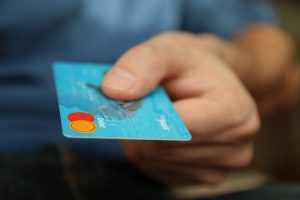Tips to Grow Your Customer Loyalty Program

Most businesses have a loyalty program to reward and retain their customers.
However, most are unable to determine how to get most customers to sign-up for their rewards program. Many make it too complex to earn rewards. Many make things unclear.
Follow these tips to grow your customer loyalty program by getting more consumers to sign-up.
1. Offer Sign-up Incentives
Make your consumers’ first step rewarding to draw more of them to your customer loyalty program. Give them a reason to sign-up for incentives. It is recommended to offer your low-profit margin products for free. It can be a powerful driver to get more people to become part of the program.
2. Create Easy-to-Earn Rewards
No matter how big a reward you are offering, if it is difficult to get, you shouldn’t expect most of your customers to sign-up for it. Most of them will leave through the complex process. So make sure that the process to earn rewards is simple and reasonable.
Remember, that consumers find value in redeeming rewards and not in continuing to earn points. You don’t want to make it difficult and less interesting to join your program. Provide multiple ways for your users to earn rewards as easily and quickly as possible. Show them from the beginning that it is easy and quick to earn rewards.
3. Use Email Campaigns
Your customers can sign-up for your customer loyalty program only if they know about it. If you have a loyalty app for small business, the first step will still need to be to inform them somehow. Using email is the ideal way to make that first contact. Create an email campaign to inform and explain about the benefits of joining your program. Make sure that they clearly understand how you will reward them when they become part of the program.
4. Get Accurate Information at POS
Whether they are buying online or from a store, make sure to get accurate information from them. You should gather customer data without any errors to avoid getting filtered as spam. More than 7 in 10 consumers will choose a store based on the quality of the customer loyalty program they offer. Once you have introduced them to your brand, you can develop a specialized loyalty app to grow your loyalty members.
5. Run In-Store & Out-of-Store Promotions
It is important to run out-of-store promotions too in order to draw more people to your customer loyalty program.
In-Store Promotions: Let your in-store customers know about your program by using signage with clear messages. You can also use digital signage to draw their attention.
Out-of-Store Promotions: Make sure to provide information on your website. For example, you can add a banner highlighting the offers. You can also optimize your program for mobile and empower it with an app. Surveys show that there is almost 60% higher chance of people joining a program that is powered by an app. It is also important to include social media into your promotional campaign.
6. Use Call-to-Action Cleverly
Include call-to-action (CTA) messages wherever possible. For example, you can add an announcement on your website’s homepage to draw attention. It will give your visitors a strong reason to join the program. The CTA should be clear and tell your customers what steps they need to take to join the program.
It is equally important to add the right CTA in your emails. When you send email messages, make it easy and quick for them to join the program. When you include direct links to the sign-up page, it increases the chances that they will join.
7. Personalize the experience
Personalizing the customer experience is the art of tailoring interactions and offerings to cater to individual needs, preferences, and behaviors. By collecting and leveraging customer data, businesses can gain valuable insights into their customers’ shopping habits, interests, and pain points.
With this information, they can segment their customer base and create targeted marketing campaigns that resonate with each group. For example, using a recommendation engine, businesses can suggest products or services that align with a customer’s past purchases or browsing history.
Personalized communications, addressing customers by their names and acknowledging their previous interactions, further reinforce the notion that the company values and understands each customer. Moreover, offering preference centers empowers customers to customize the content and frequency of communications, ensuring they receive relevant information without feeling overwhelmed.
In physical stores, location-based targeting can send personalized offers and promotions based on the customer’s proximity to a specific store or region. Overall, personalization creates a sense of exclusivity and care, fostering stronger emotional connections with customers and increasing their loyalty to the brand.
8. Referral program
A referral program is a marketing strategy that encourages existing customers to refer new customers to a business in exchange for rewards or incentives. The program works by leveraging the power of word-of-mouth marketing, where satisfied customers recommend products or services to their friends, family, or colleagues.
When an existing customer refers someone, they typically receive a reward, such as discounts, cash incentives, loyalty points, or free products/services, as a token of appreciation.
Simultaneously, the new customer referred to the business also receives a benefit, creating a win-win situation.
Referral programs can be highly effective as they tap into the trust and rapport that existing customers have already established with their social circle.
Moreover, it serves as a cost-effective customer acquisition method, as the marketing expenses are incurred only upon successful conversions
9. Gamification elements
Gamification elements refer to the integration of game-like features and mechanics into non-gaming contexts, such as marketing, education, or business processes. In essence, it involves applying game design principles to engage and motivate users in achieving certain objectives. These elements often include points, badges, challenges, leaderboards, progress bars, and rewards.
By incorporating gamification into various experiences, businesses and organizations seek to enhance user engagement, promote behavioral changes, and create a more enjoyable and interactive environment. For instance, in a customer loyalty program, gamification elements can be utilized to reward customers with points for each purchase, unlock different badge levels based on their spending, and provide challenges to earn additional rewards or exclusive benefits.
The use of these game-like elements appeals to people’s inherent desire for achievement, recognition, and competition, ultimately fostering greater customer loyalty and encouraging continued participation and interaction with the brand or platform.
Successful implementation of gamification elements can create a sense of fun and accomplishment for users, transforming mundane tasks into enjoyable experiences that keep customers coming back for more.
10. Multi-tiered loyalty program
A multi-tiered loyalty program, also known as a tiered loyalty program or a loyalty program with multiple levels, is a customer reward system that offers different levels of benefits and rewards based on the customer’s level of engagement or loyalty with the brand. In this program, customers are grouped into various tiers or levels, each representing a different degree of loyalty or spending activity.
As customers progress through the tiers, they unlock increasingly attractive perks, incentives, and exclusive offers. For example, the program may have tiers like “Bronze,” “Silver,” “Gold,” and “Platinum,” with each tier offering progressively better rewards, such as discounts, free products, early access to sales, personalized services, or priority customer support. The multi-tiered approach adds a sense of achievement and aspiration for customers, as they strive to reach higher levels and enjoy more prestigious benefits.
This system not only encourages customers to remain loyal and make repeat purchases but also motivates them to spend more to attain the next tier.
As a result, a multi-tiered loyalty program can significantly enhance customer engagement, strengthen brand loyalty, and increase customer lifetime value for businesses.
Conclusion
Growing a successful customer loyalty program is a dynamic process that requires continuous effort and adaptation.
By understanding your customers’ needs, offering attractive rewards, and personalizing the experience, you can foster strong connections and encourage repeat business.
Implementing gamification elements and referral programs can further boost engagement and customer loyalty.
Additionally, a multi-tiered loyalty program adds a sense of achievement and aspiration, motivating customers to stay engaged and spend more to unlock higher rewards.






